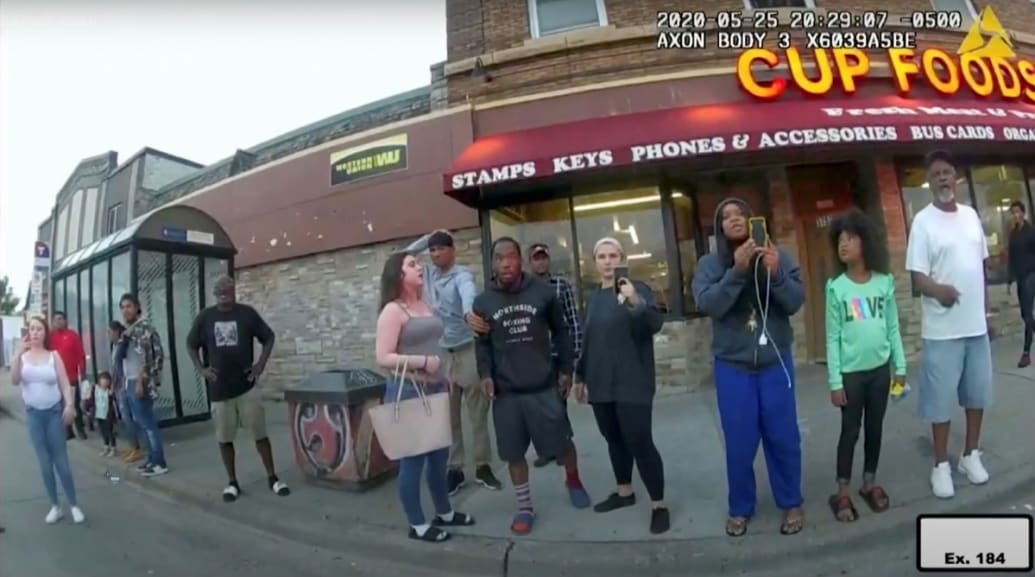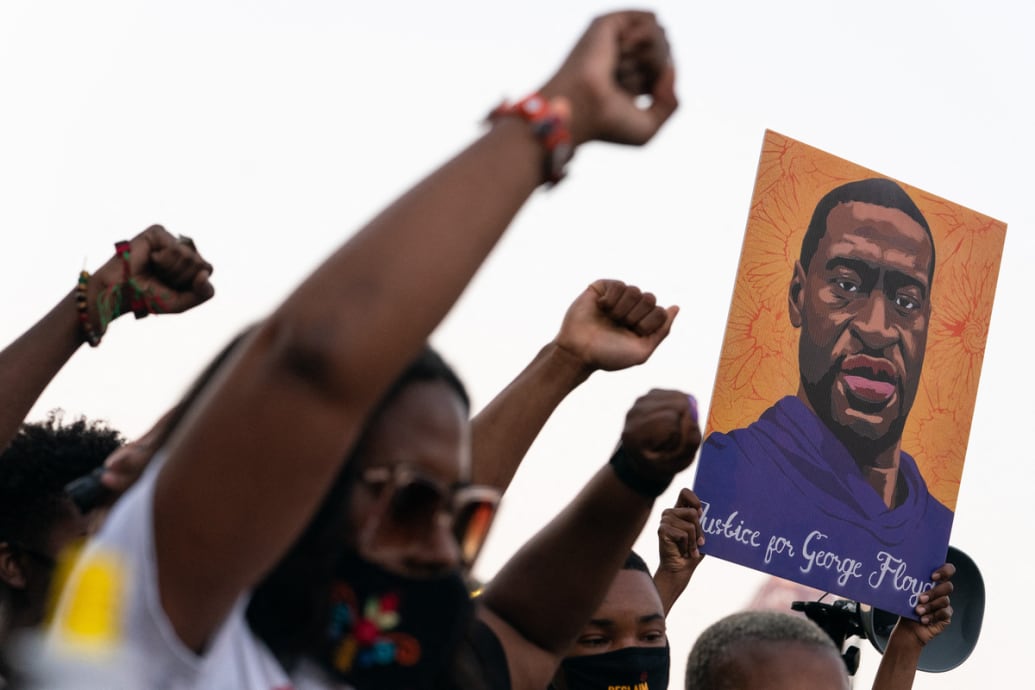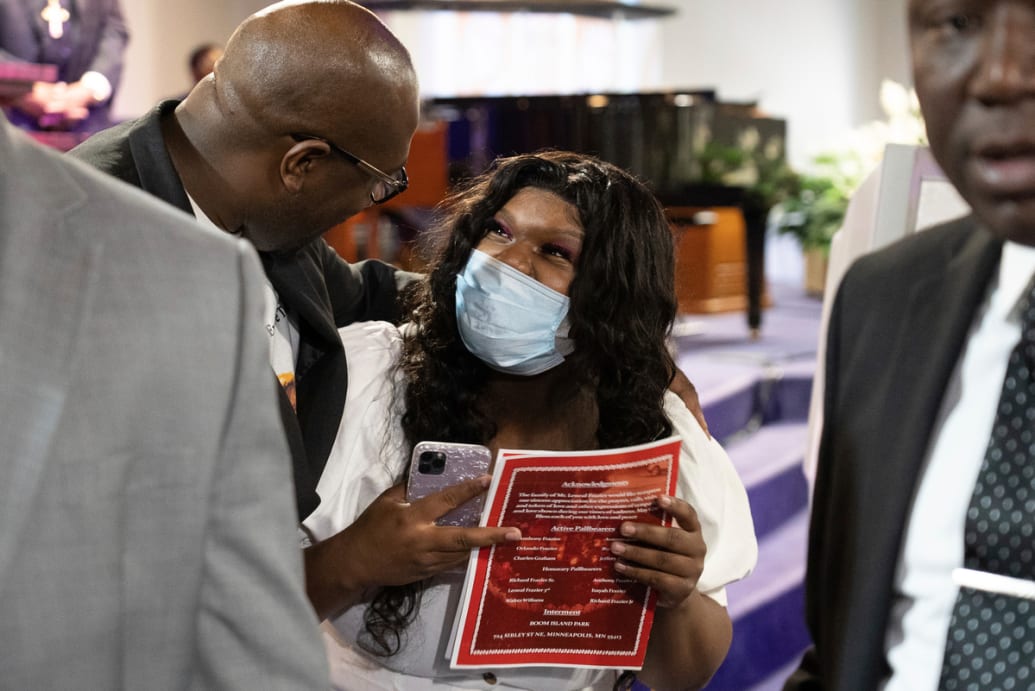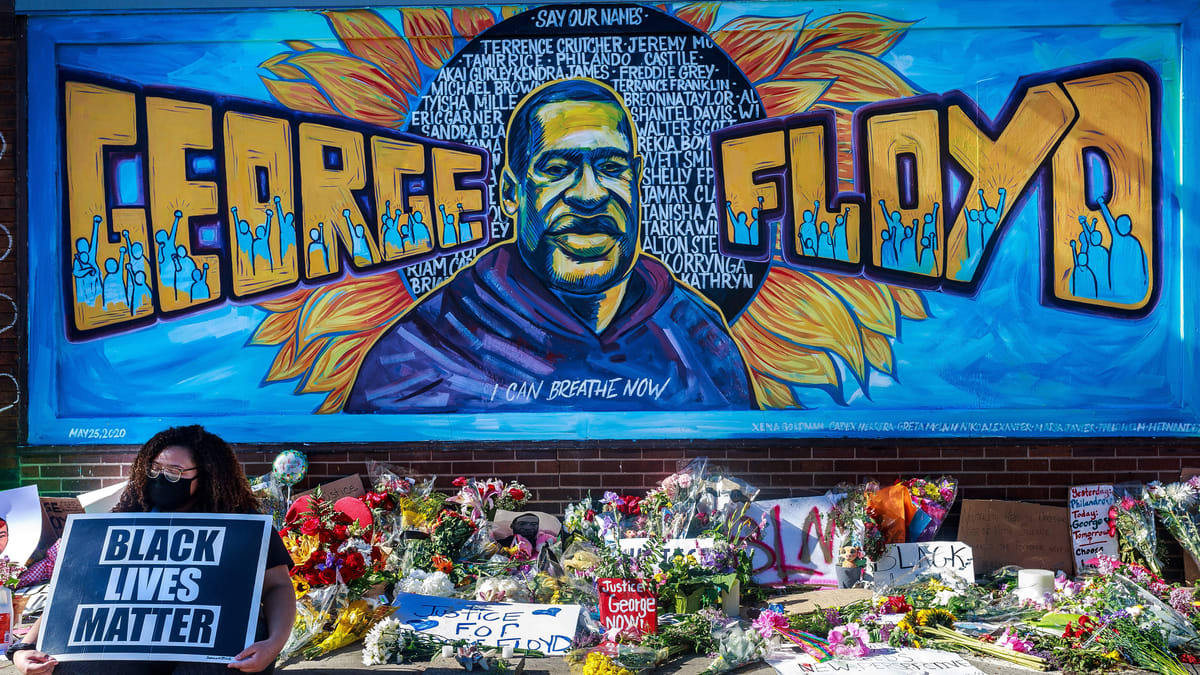Candace Owens, the Black conservative commentator, was right when she said that George Floyd is no hero. He isn’t. But our digital age certainly made him a martyr. It was the cell phone video captured by 17-year-old high school student Darnella Frazier that served as incontrovertible evidence of Floyd’s slaughter and sparked the process of converting a struggling, middle-aged addict with a prison record into a symbol, a touchstone, an icon, his name recited by children in classrooms, his face painted in colorful tribute on city walls, his soul prayed for in churches, synagogues, and mosques the world over. We almost didn’t need to wait for the wheels of justice to turn. Derek Chauvin’s fate, at least in the court of public opinion, was sealed the moment that Frazier aimed her camera at him, confirming the cell phone camera as society’s newest surveillance tool, one capable of exposing all manner of injustice, whether that be an overzealous security guard at a strip club or a police officer committing murder on a Minneapolis street.
Once her name was known, Frazier, too, was being hailed for her courage, her own GoFundMe page raising over half a million dollars to provide “peace and healing” for the trauma brought on by what she had witnessed and for the continuing trauma from the digital age’s unique form of insults and threats, which she endured long afterward. “It’s been nights I stayed up apologizing and apologizing to George Floyd for not doing more,” she said, “and not physically interacting and not saving his life.” And what a modern thought that is, that somehow the camera was an agent to the crime. In the age of the cyberwarrior, it’s hard to be a truth teller.

Darnella Frazier (3rd R) uses her mobile phone to record the arrest of George Floyd, in a still image taken from Minneapolis Police body camera video in Minneapolis, Minnesota, U.S. May 25, 2020.
Minneapolis Police Department/Handout via REUTERS
But let’s be clear: Floyd did not act the hero here. In fact, he was brutally acted upon. And Frazier’s presence at this historic moment was an accident. She was there to accompany her nine-year-old cousin, who wanted snacks from Cup Foods but was too young to go on her own. It took presence of mind for her to point her cell phone camera at the scene, while she, along with a small sidewalk crowd, scolded the police for what they were doing. And it took a steely perseverance for her to continue to point the camera while she watched a man die before her very eyes.
While it was Floyd’s still image that would proliferate later, it was the video itself, posted on Facebook, that changed the world. Without the cell phone at her disposal, Frazier and the other bystanders could only have described what they saw, and memory, being at best a subjective tool for discovering the truth, too often falls victim to the dictates of power. That’s because the recall of witnesses to crime must first go through a hierarchy of believability, one that enhances or discounts testimony according to cultural signals like race, gender, economic standing, authority, presentation, articulateness, and personality. Given all that, what are the chances that a hypothetical Darnella Frazier from a time before cell phones, recalling to a judge or jury the deadly assault she saw committed on a hypothetical George Floyd, would have been believed over the testimony of a white male law enforcement officer like Derek Chauvin and the blue wall of silence built to protect him?
We are greeted each day by a bombardment of imagery, much of it manipulated and distorted to make us feel certain feelings and do certain things, like spend unlimited money and believe in implausible conspiracies. But while we’ve grown increasingly suspicious of the truthfulness of the picture, for the moment, at least, unedited raw video still has the quality of record. Raw video shot by a mere bystander—not a professional, not an activist with an agenda—arriving at the scene by chance and recording a violent injustice committed in her presence is even more believable, more reliable, since our reaction presupposes that there is no pretense or ego, no fashion or framing, no interpretive gaze or willful finger-pointing. Just the truth.

People raise their fists and hold a portrait of George Floyd during a rally following the guilty verdict the trial of Derek Chauvin on April 20, 2021, in Atlanta, Georgia.
ELIJAH NOUVELAGE/AFP via Getty
In 1945, when the British photojournalist George Rodger arrived on assignment in Germany at the Bergen-Belsen extermination camp—the first photographer to get there—he felt ashamed to be looking through his viewfinder to assemble “thousands of Jewish corpses into nice photographic compositions,” and thereafter refused to cover war and its aftermath. But a camera held by an innocent, the accidental photojournalist who has become a hallmark of our time, is another thing entirely. In Darnella Frazier’s hands, the video becomes merely the transfer of what happened then to our eyes now as we open it from our inbox, watch it on cable television, or glimpse it from a post found on our own cell phones. All of which means that when it comes to the abuse of power, at least as it’s rendered in public spaces, you can no longer hide. The camera—some camera—will always be there to remember you.
The video shot by Frazier provides an interesting study. By comparison, consider, first, how in 2015, Walter Scott, a 50-year-old African American, was stopped by a North Charleston, South Carolina, cop for having a broken taillight. Scott, fearing arrest, fled on foot, and Officer Michael Slager ran after him. It was fairly early in the morning, and while Scott’s car was parked in the lot of an auto parts store, he had run behind a metal fence near the back side of a pawn shop where there appeared to be no one in sight, Slager right behind him in pursuit.
Yet it turned out that there was someone present. Feidin Santana, a Dominican barber on his way to work, noticed the commotion, reached for his phone, and recorded the entire scene. The video Santana captured shows Slager shoot Scott eight times in the back, killing him. The officer then approaches Scott’s body, checks for a pulse, and finally runs to retrieve his Taser and put it near the scene. This was done to fit the lie that Scott had been struggling to grab it from him and that Slager had been forced to kill him in self-defense. “Shots fired and the subject is down,” Slager says into his radio. “He grabbed my Taser.”
By contrast, Darnella Frazier’s video of George Floyd’s death has no apparent narrative. It tells no clear story. It’s just a single scene showing a white police officer with his knee on the neck of a Black man lying prone on the pavement, his head pinned next to the right rear tire of the police cruiser. The officer has his hand in his pocket and his sunglasses perched on his head while he looks off nonchalantly. But here’s the key: While it’s a single scene, the video goes on for nine minutes and twenty-nine seconds.
No moral person can escape the gruesome awkwardness of watching it, the unpleasant feeling that even voyeuristic detachment cannot shield you from some level of responsibility for what you’re seeing. In fact, viewing it, you have the sense that you, yourself, are guilty of a crime—which, in a way, if you believe in the spirit of the collective, we all are. There is even something of a crucifixion to it, a long, slow, painful end, carried out in public, with both official and unofficial viewers in attendance and a common cry from the dying—Christ for his “father,” Floyd for his recently departed “mama.”

George Floyd's brother Philonise Floyd speaks to Darnella Frazier after a service honoring the life of her uncle, Leneal Frazier, on July 19, 2021 in Minneapolis. Frazier, the uncle of Darnella Frazier, was killed earlier this month when his car was struck by a Minneapolis Police officer engaged in a pursuit through the city's north side.
Mark Vancleave/Star Tribune via AP
Where the film of the Walter Scott shooting tells a story, there the killing happens in an instant. But with Floyd, the killing is the story, and, while the time elapsed is essential to its power, the focus on a single, unchanging scene also gives it the quality of an iconic still photograph or even a piece of sculpture. A man has his knee on another man’s neck. That man is dying. The two could have been carved of Carrara marble and put on view in a museum or a public square, a mordantly askew rendering of the Pieta, with the Madonna and child replaced by the executioner and his prey. It matters not who they are, really—George Floyd and Derek Chauvin—only that they’re symbolic of a larger whole. And the symbolism is crucial to the reaction that the scene provokes, for one cannot read this arresting image, moving or still, without concluding that the death of George Floyd is neither surprising nor unusual. Its power is in its very ordinariness. It’s a rendering of the whole sorry relationship between Black and white in America and, even more, the whole perverse relationship between the powerful and the powerless throughout the world. Indeed, no picture since the June 5, 1989 confrontation between a lone man with shopping bags and a parade of tanks—“Tank Man,” as he came to be known, since his identity was never discovered—under the heat of the Tiananmen Square protests in China has had so much international resonance.
Excerpted from Seen and Unseen: Technology, Social Media, and the Fight for Racial Justice by Marc Lamont Hill and Todd Brewster. Copyright © 2022. Available from Atria Books, an imprint of Simon and Schuster.


